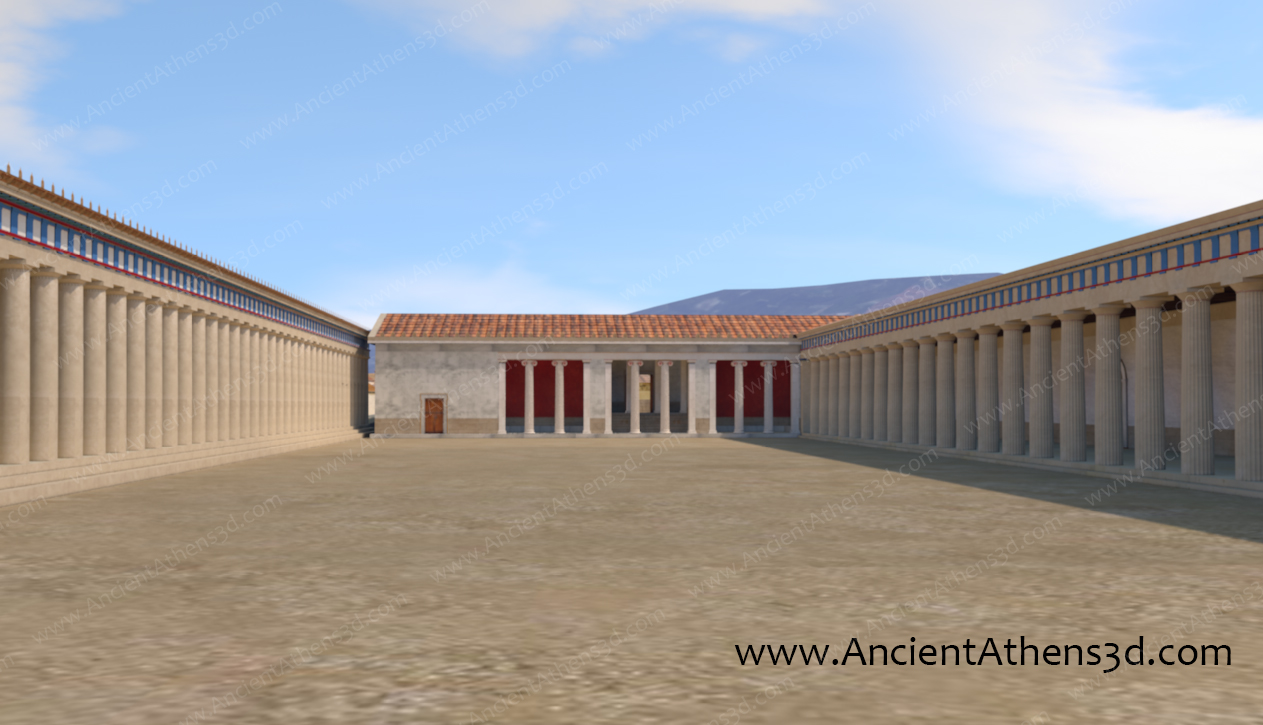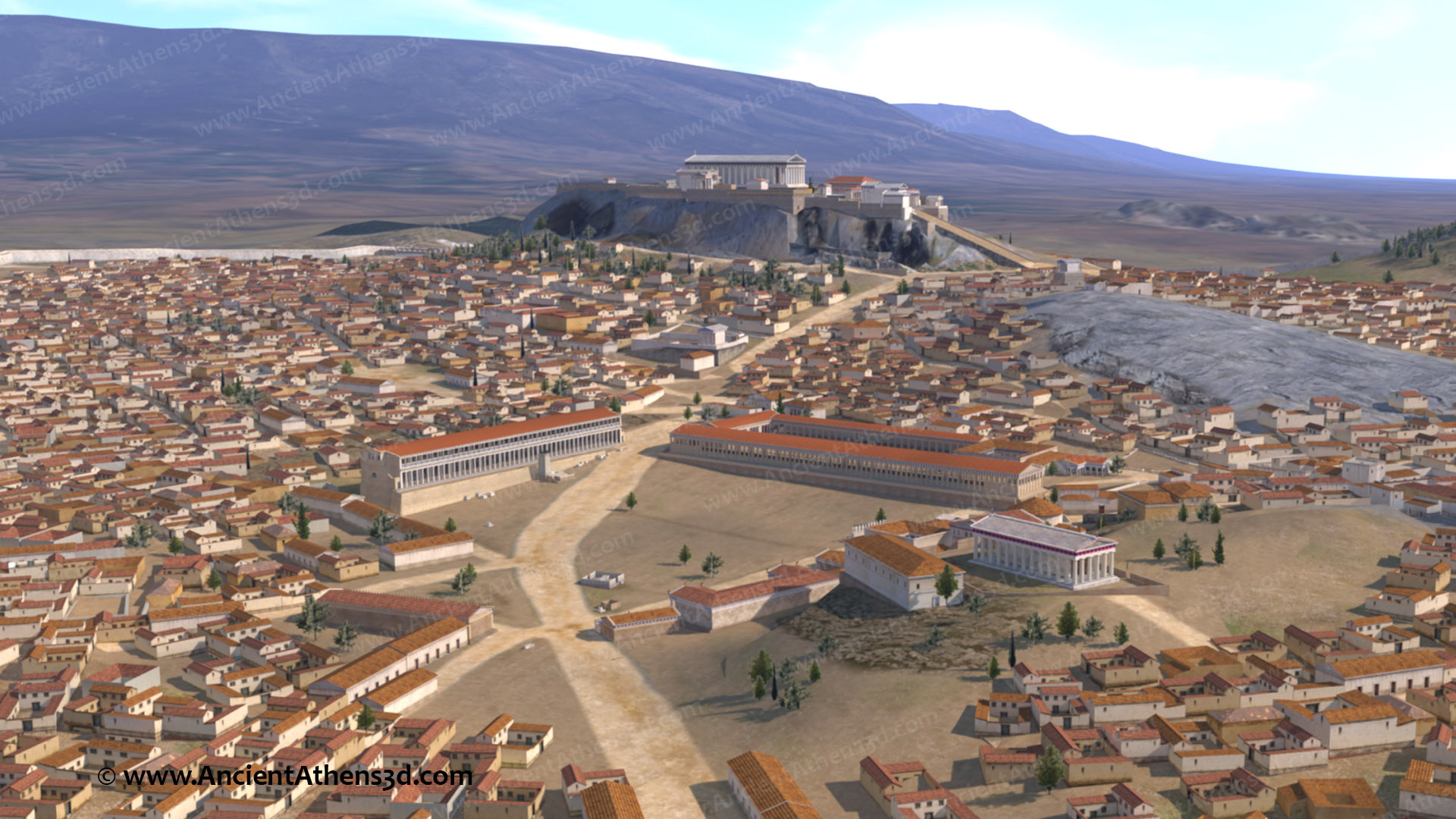The Hellenistic Acropolis (323-86 BC)
During the Hellenistic period the monuments on the Acropolis retain their function. Minimal changes are observed in the buildings, but the offerings, mainly sculptures, are increasing.
Hellenistic additions to the Acropolis
Only a few changes took place on the rock of the Acropolis during the Hellenistic period. The only new building was the wing extension added in the eastern gallery of the Stoa of Artemis Brauronia. Also, many sculptures-offerings were erected by the kings of hellenistic kingdoms.
The most important of them were the statues depicting the war between Greeks and Gauls, a gift to Athens by the king of Pergamon Attalus I. Many Roman marble copies of these statues can be found in several museums around Europe. This work (copies a bigger one erected in Pergamon) was set up south of the Parthenon next to the wall between 230-220 BC. Other important statues were the two tethrippa (four horse chariots) set up on gigantic pillars. One of those was a dedication from the king of Pergamon, Eumenes II for his victory in the Panathinaic games (178 BC) and it was located west of the Pinakotheke of Propylaea where the big pedestal is still visible today. Another one, almost similar to the previous, was erected in north-eastern side of Parthenon covering that corner of the temple. It was dedicated either to Eumenes II or Attalus II. The same type of tethrippon, with the pillar-pedestal, was set up at the same period in front of the Stoa of Attalus in the Agora.The Acropolis South Slope the 2nd century BC








